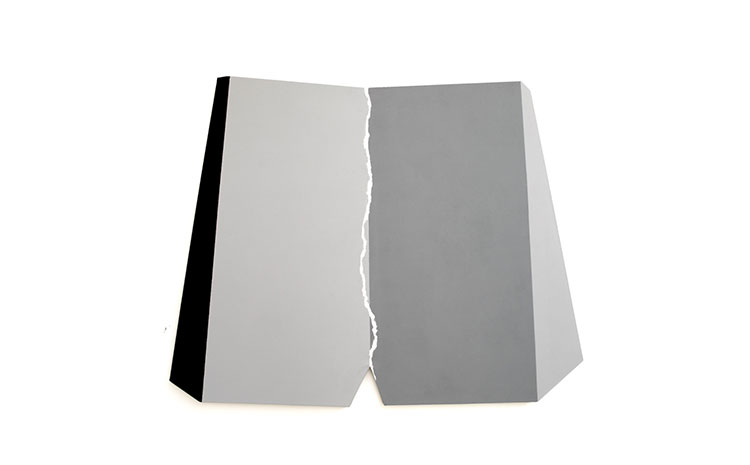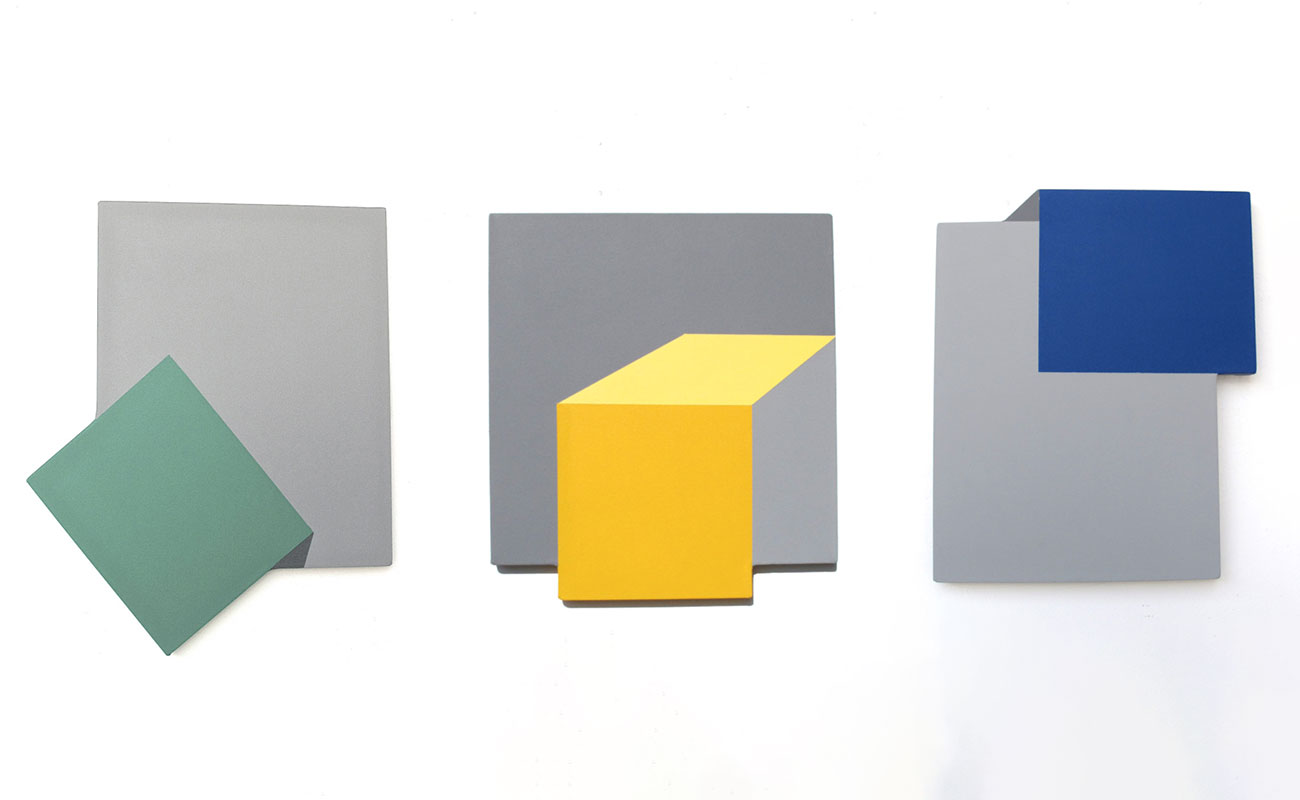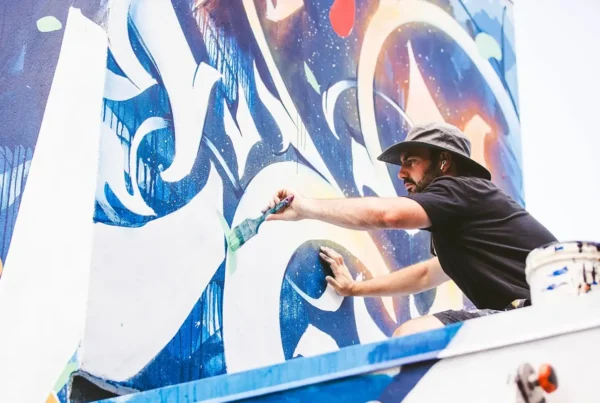“The geometric form is very important…it is not a work on a canvas that is important, but the totality of this construction, which is the work in itself.”
Early Artistic Influences and Transition to Geometric Style
Born in Vienne, France, Raphaël Durans was immersed in an artistic environment from an early age, as his father, Marcel Durans, was a prominent impressionist painter. Though too young to attend the School of Fine Arts in Lyon, Raphaël received preliminary training there before taking a hiatus from the art world.
After exploring the world and experiencing diverse cultures, Raphaël discovered his true passion for visual arts at the age of 30. Abstract expressionism, specifically the works of W. Dekooning, captivated him, and he gradually transitioned to a more radical and geometric style. Kazimir Malevich, Piet Mondrian, F. Stella, and the Madiste movement, with Carmelo Arden QUIN as a key influence, shaped his style.
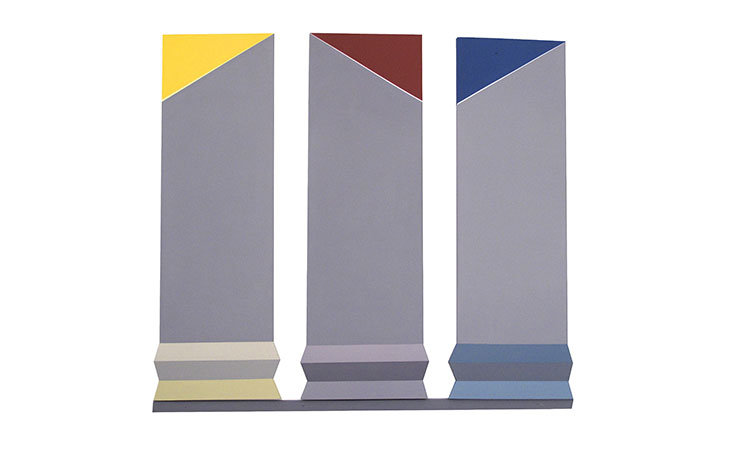
Volumetric Art and the Philosophy Behind Raphaël’s Work
Using cut frames and geometric forms, Raphaël’s creations are based on the principles of constructed and concrete art, imparting volume and movement to his pieces. He believes that the entirety of the construction, rather than just the canvas, is of utmost importance. The interplay of lines and angles breaks free from the constraints of rectangular or square spaces, creating a dynamic visual experience. Raphaël refers to this technique as volumetric art, an extension of the tenets of geometric art.
Raphaël’s artistic philosophy is grounded in the belief that the visual arts should be a reflection of the world around us, and that art should not exist in a vacuum. His work embodies this ethos, with each piece drawing from his experiences and the world at large. He seeks to transcend the boundaries of traditional art, creating pieces that challenge and inspire the viewer.
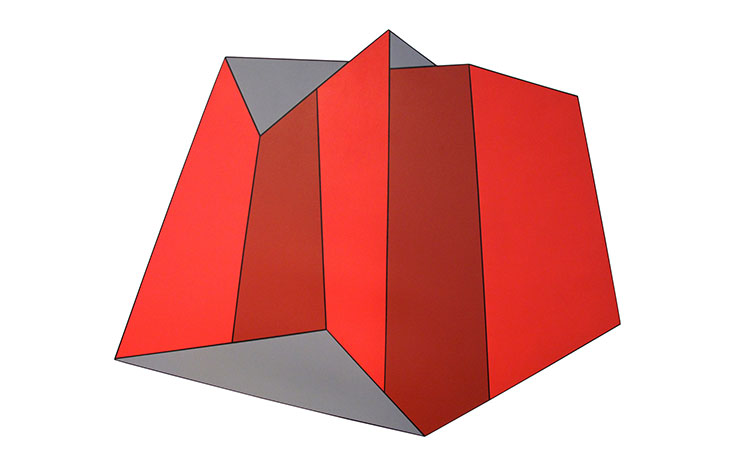
Introspection, Creative Process, and Artistic Growth
Raphaël Durans finds solace in a serene and commodious studio, where he can delve into his creative process undisturbed. His ideal environment is one that allows him to meditate and explore the spatial dimensions of his artistry, all the while seeking harmony in his work. It is no surprise that Raphaël chose to settle in Marrakech, a place that holds a dear place in his heart as it was integral to his formative years.
His introspective nature is the driving force behind his artistic expression, as he seeks to create pieces that reflect his vision and aspirations. Raphaël remains committed to his craft, viewing each of his works as a stepping stone towards growth and self-improvement. In fact, he goes as far as numbering his creations chronologically, tracing his artistic journey as it unfolds.
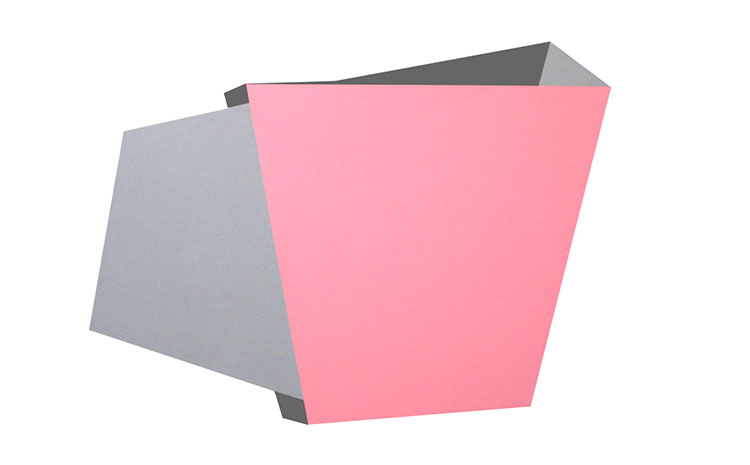
Challenges and Determination in Pursuing Artistic Passion
Although Raphaël’s art is highly regarded in specific countries, such as the United States, Switzerland, and Germany, he faces logistical challenges when it comes to showcasing his work. High transportation and production costs are a constant impediment to his career development, but he remains determined to pursue his passion and share his creations with the world.
For Raphaël, art is not just a form of creative expression; it is a vital component of his life, serving as a constant source of inspiration and motivation. He firmly believes that his artistic endeavors provide an antidote to the transience of life, allowing him to build a solid foundation for his dreams and aspirations.
